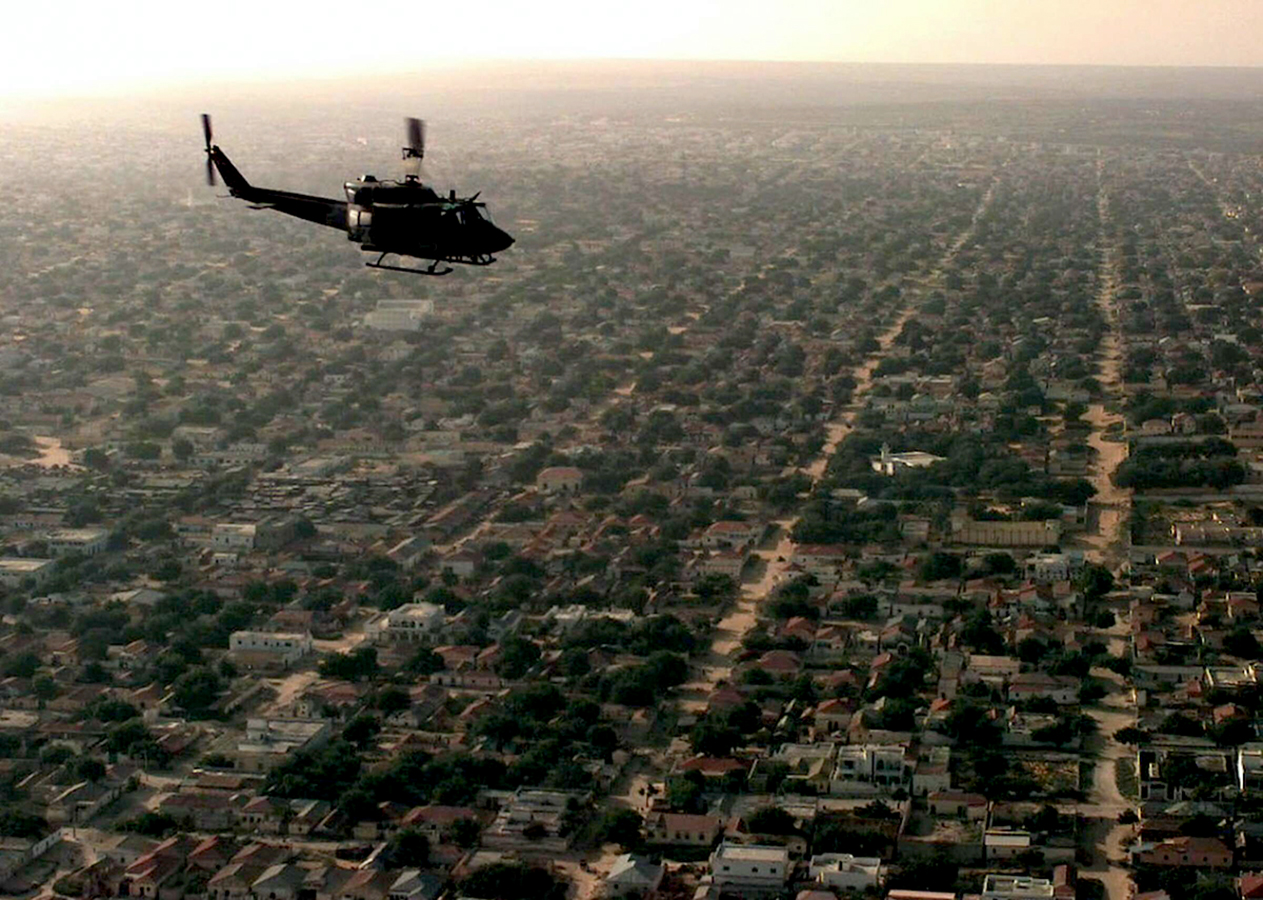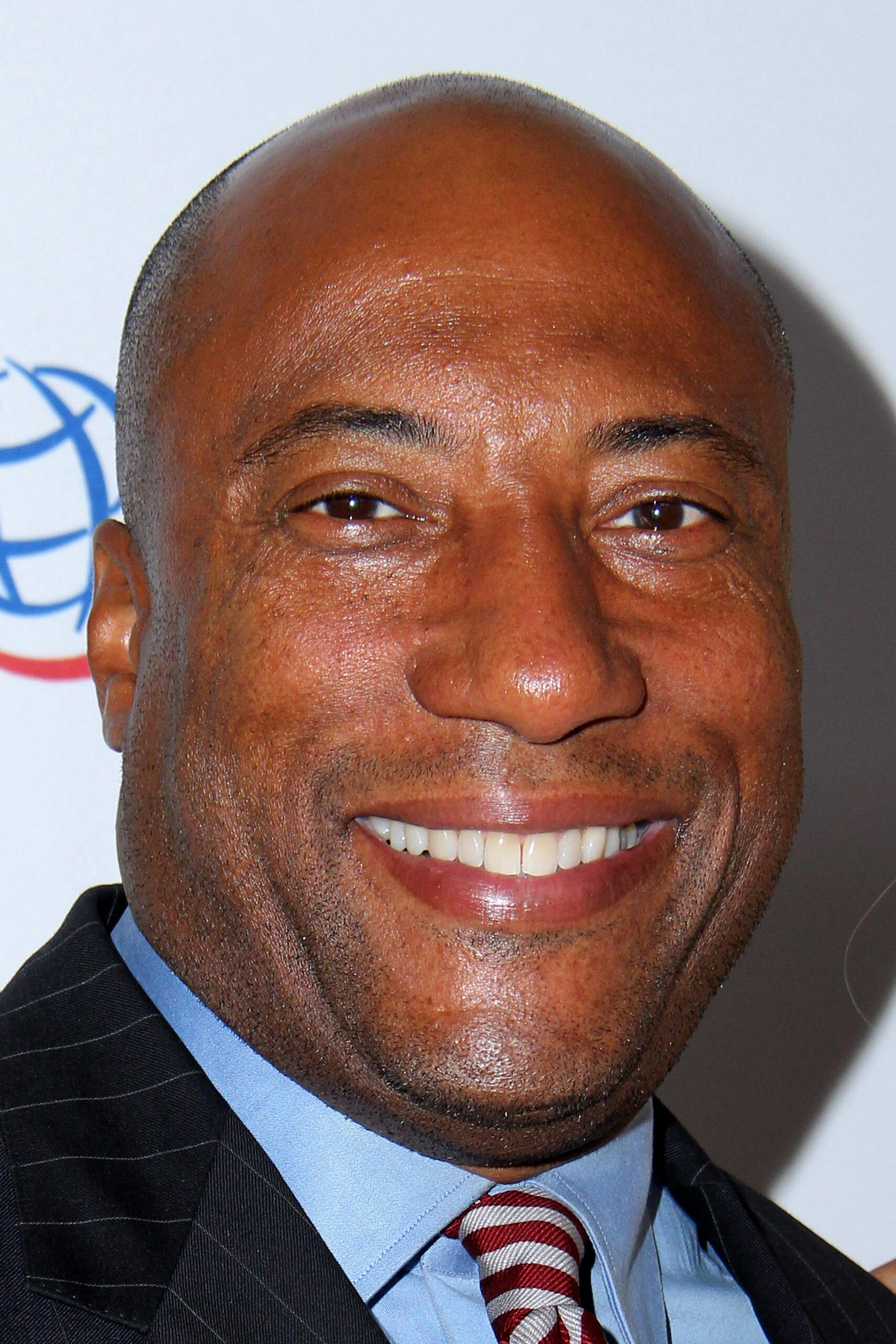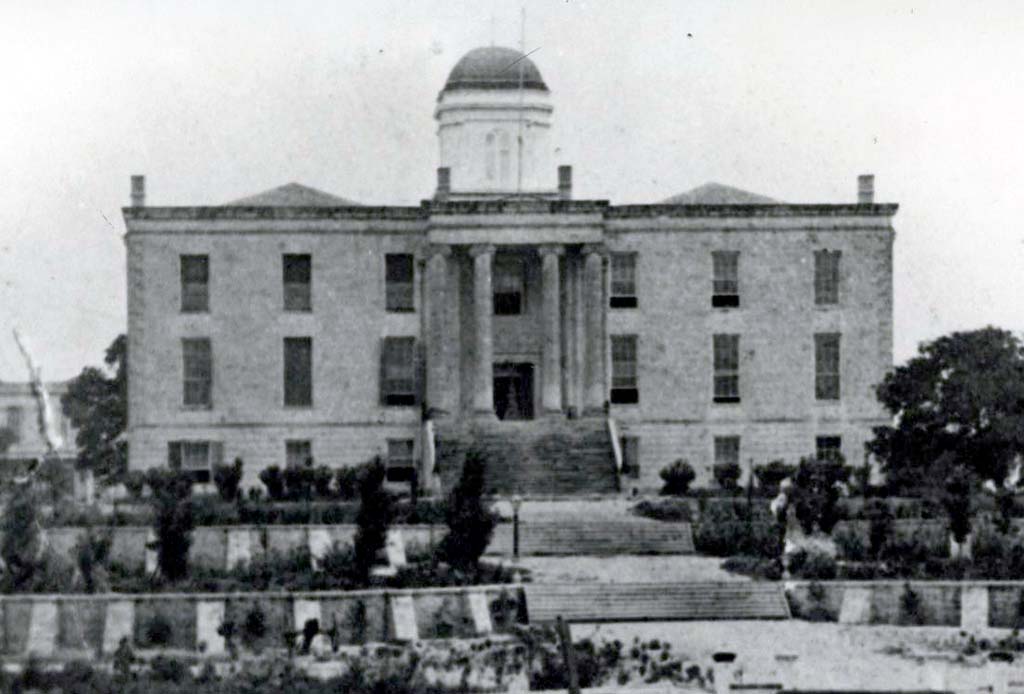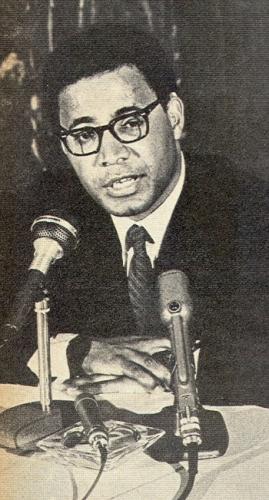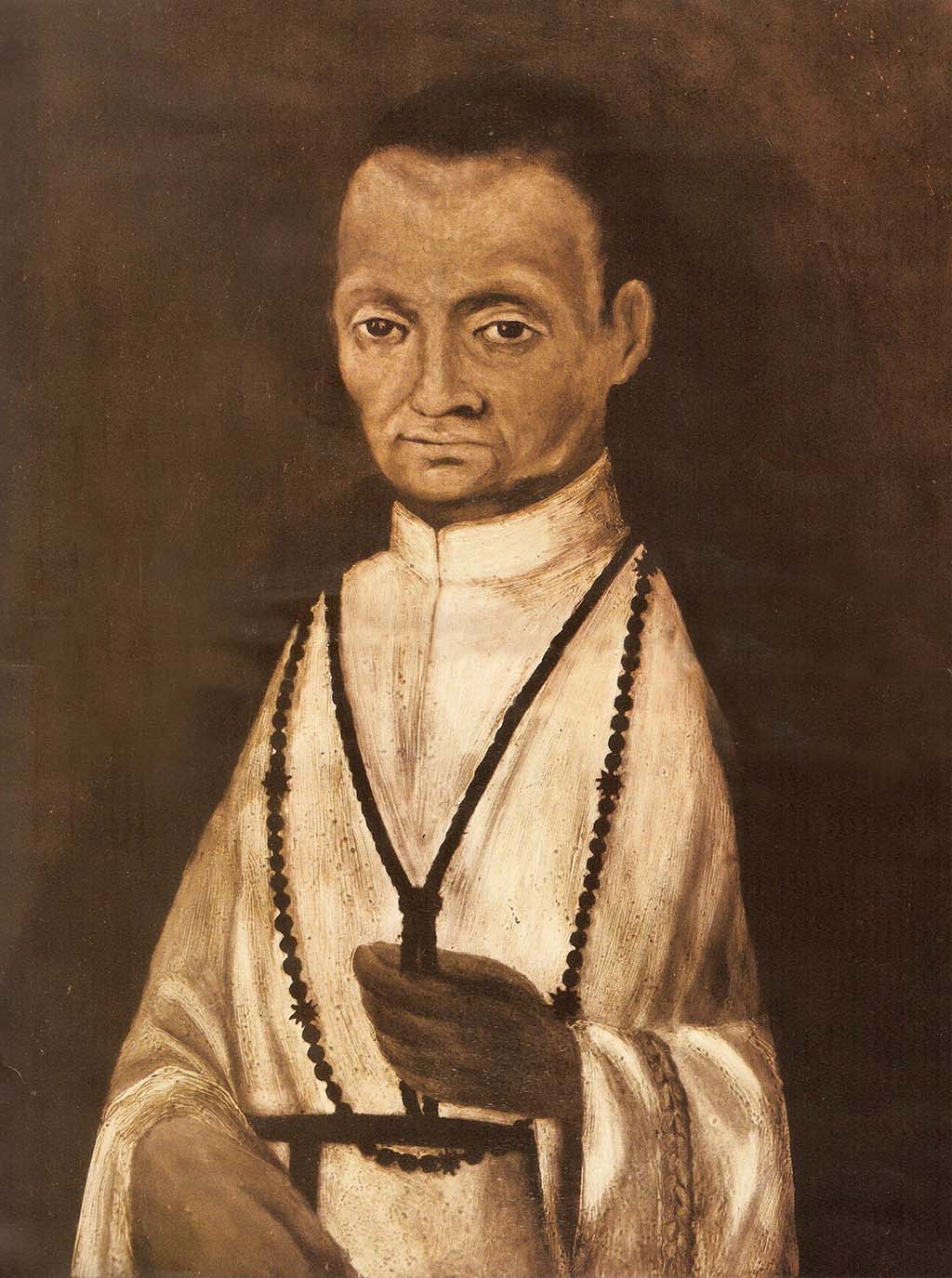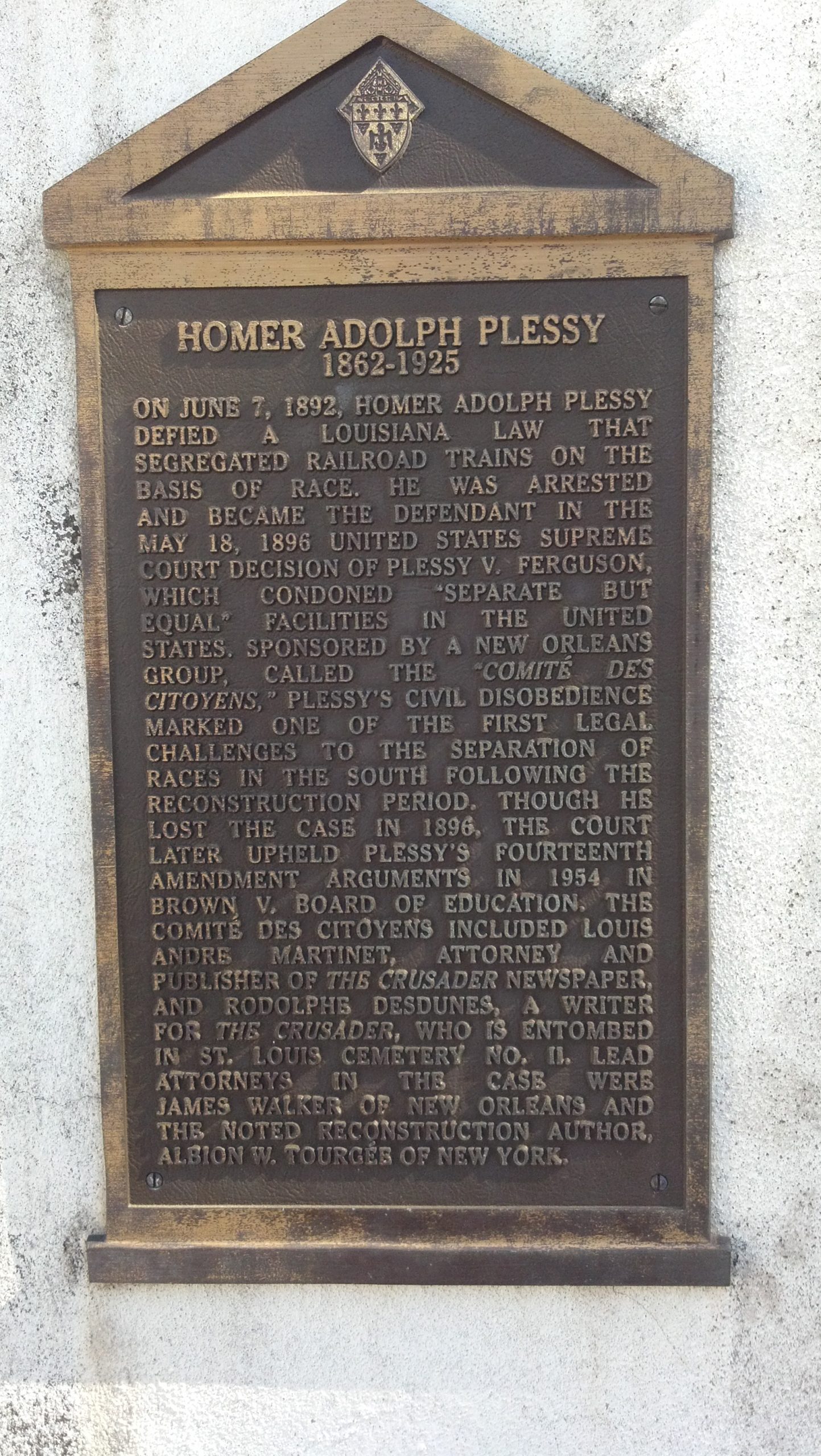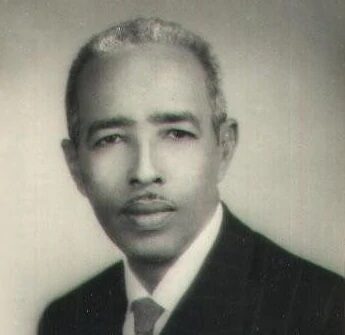The Battle of Mogadishu, also known as Black Hawk Down, was part of Operation Gothic Serpent. It was fought on October 3 and 4, 1993 in Mogadishu, Somalia, between United States troops as part of a larger United Nations peacekeeping mission, and Somali militiamen loyal to Somali General Mohamed Farrah Aidid. The battle was part of the broader Somali civil war which had been raging since 1991. The United Nations had initially become involved to provide food aid to alleviate the famine, but eventually shifted its mandate to democracy building and the restoration of a government.
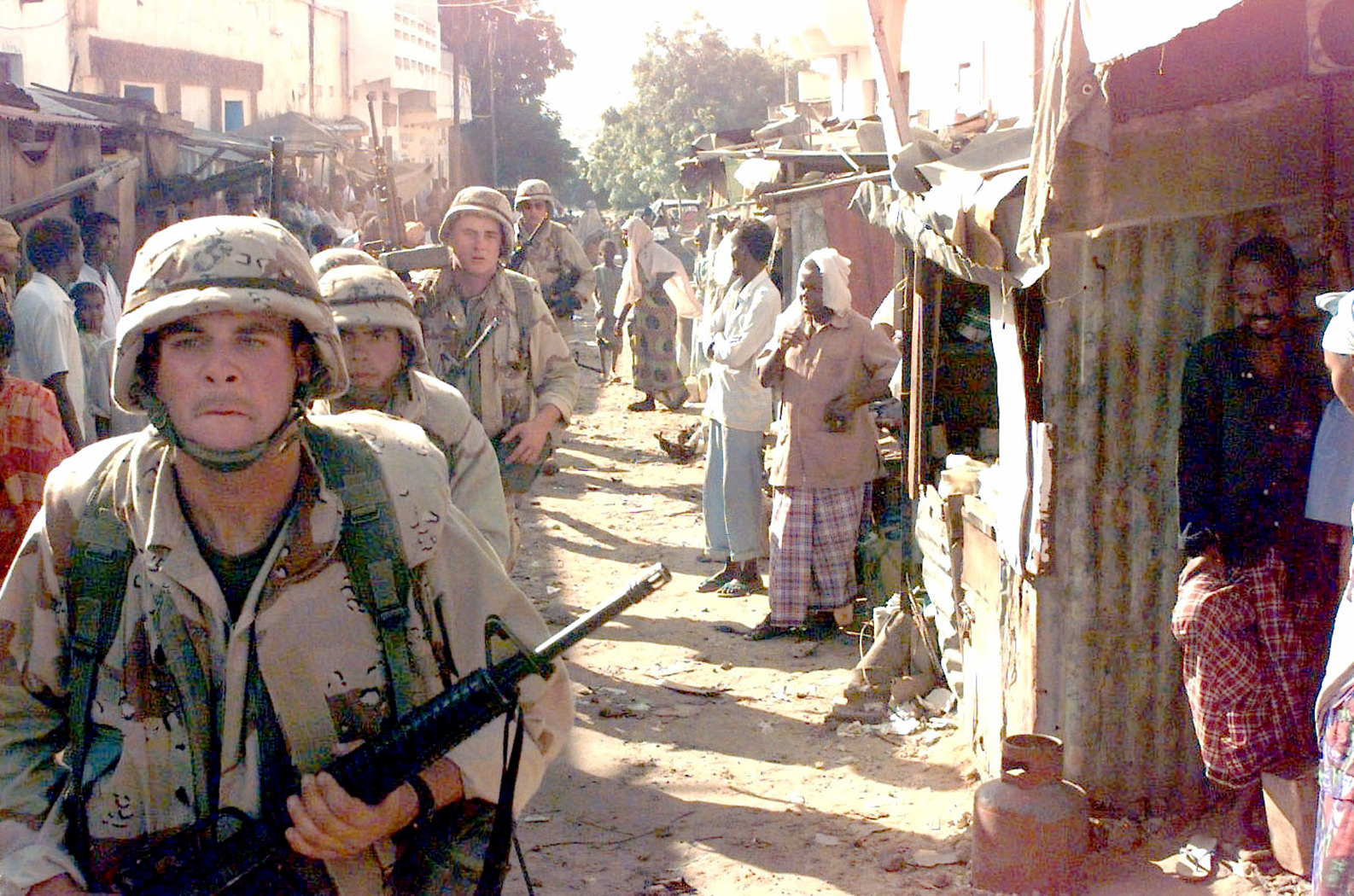
US Marines walk single file, Bakara Market. Mogadishu, Somalia, January 11, 1993 – Courtesy National Archives (6508260)
On June 5, 1993, the UN suffered the heaviest loss to its peacekeeping forces in decades when the Pakistani contingent was attacked while inspecting Aidid’s arms depots. Aidid was held directly responsible for the incident and a hunt for him began that was to characterize much of the intervention from UN from that point to the actual Battle of Mogadishu. As part of the campaign to capture Aidid, US forces in Mogadishu launched the raid on the Abdi House on July 12, 1993, killing numerous members of Aidid’s clan, the Habr Gidr. This led to the first targeted killing of American personnel by Aidid on August 8 1993, which in turn prompted U.S. President Bill Clinton to send Army Rangers to capture Aidid.
On October 3, 1993, US forces planned to arrest two of Aidid’s senior lieutenants during a meeting in the Aidid-controlled section of Mogadishu. The raid, originally scheduled to last one hour, turned into an all-night standoff and rescue operation that dragged on into the daytime hours of the next day. The objective of the operation was achieved, but it was a Pyrrhic victory that turned into a deadly battle for Mogadishu. During the operation, Somali forces armed with RPG-7s, shot down two American Sikorsky UH -60 Black Hawk helicopters. A desperate defense of the downed helicopters began as more American troops were sent in to protect survivors of the crashes. On the morning of October 4, a UN armored convoy fought its way to the helicopters and suffered further casualties but was eventually able to rescue the survivors.
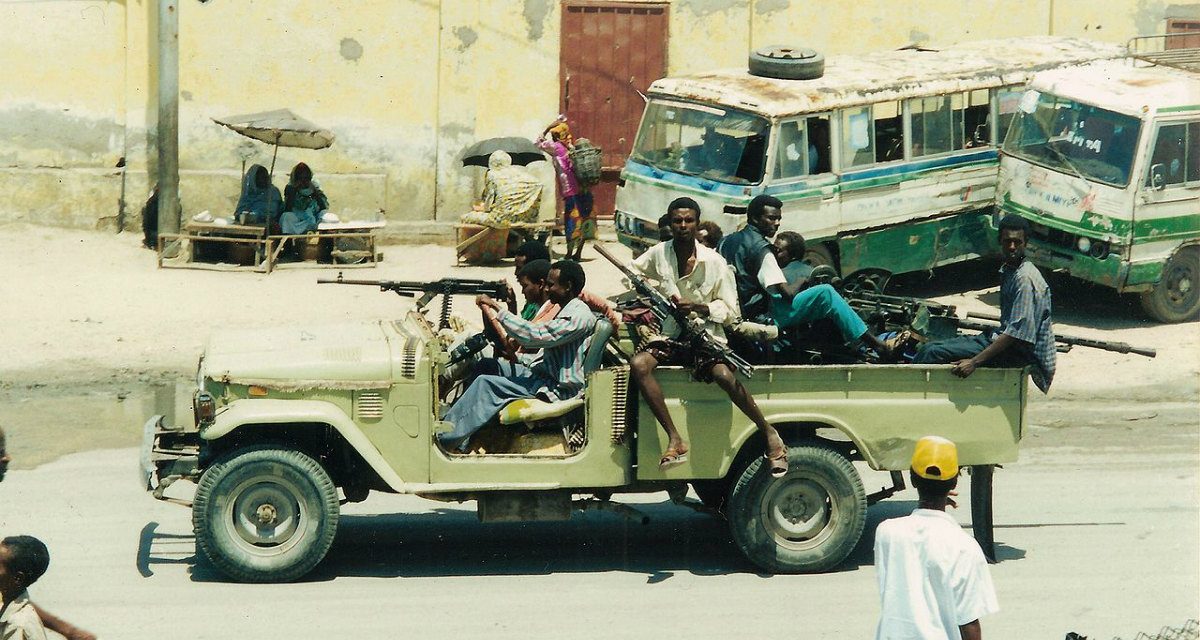
Armed militiamen in transit in Mogadishu, ca. 1992-1993 – Photograph by CT Snow under the Creative Commons Attribution 2.0 Generic license
The exact number of Somali casualties is not known, but estimates range to up to 3,000-4,000. The Red Cross estimates that another 200 Somali civilians were killed when they reportedly attached the Americans. The Pentagon initially reported five American soldiers killed, but the final figure rose to 18 dead and 73 American soldiers wounded, the largest U.S. casualty toll since the Vietnam War era.
After the battle, dead American soldiers were dragged through the streets by Somalis in scenes shown on international television, prompting in the United States great public outcry. In response President Clinton withdrew remaining U.S. forces. Fear of a repeat of the battle was one reason for the Americans’ reluctance to engage further in Somalia and other regions. The battle changed American foreign policy and eventually led to the withdrawal of Mission UN in 1995.

